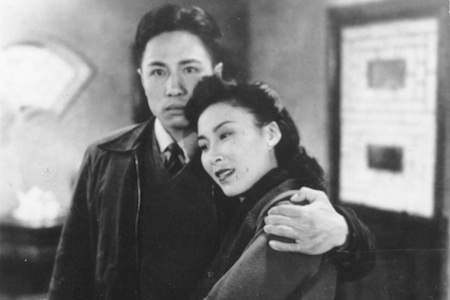
By strange but happy coincidence, Keyframe has recently played host to a spate of Chicago film-related birthday and anniversary videos. Last week we unveiled the video present for longtime Chicago critic Jonathan Rosenbaum’s seventieth birthday, and earlier this week Nelson Carvajal presented a video tribute to kick off the Chicago Underground Film Festival for its twentieth anniversary. This week also happens to be the birthday of one of China’s most popular film critics and bloggers… who also happens to live in Chicago.
Zhang Ling is a PhD student in the Cinema and Media Studies Department of the University of Chicago. But even while pursuing her graduate studies amidst the tranquil environs of the University’s Hyde Park neighborhood, she’s enjoyed a popular reputation as one of China’s most discerning and enthusiastic cinephiles. Through her Chinese-language blog (loosely translated as “Chicago South Side Film Happenings,” her Weibo (the Chinese equivalent of Twitter) account with its tens of thousands of followers and her recently published book of film writings, Fleeting Shadows of Hyde Park, she has gained something of a cult following; she is routinely visited by Chinese cinephiles and filmmakers whenever they pass through Chicago.
Zhang is now focusing her research on the cinematic properties of sound in cinema, specifically in Chinese movies. In collaborating with her on a video essay, we decided to explore the unique properties of sound in what is commonly considered the greatest Chinese film ever made, Spring in a Small Town by Fei Mu. The 1948 classic was made at a critical moment in Chinese history, following its liberation from Japanese wartime occupation and in the midst of civil war between Communist and Nationalist forces. The nation’s shell-shocked state at that moment is conveyed lyrically through the film’s ravaged landscape, the delicate emotional states of its characters and the fragile relationships between them, depicted with immeasurable nuance. It’s a film that reveals a uniquely Chinese cinema in style and sensibility, one on the brink of exploding on the global stage just as Italian Neorealism had around the same time, only to be tragically thwarted by the same dissolute social forces that give the film its alchemic power. Nevertheless, it has prevailed as a film that both Mainland filmmakers like Jia Zhangke and Tian Zhuangzhuang (who remade it in 2002) and Taiwanese filmmakers like Edward Yang and Hou Hsiao-hsien swear by, not to mention Hong Kong’s Wong Kar-wai (In the Mood for Love would be unthinkable without it). Spring in a Small Town serves as perpetual model for filmmakers; it represents the best of Chinese cinema’s lost golden age.
[iframe width=”560″ height=”315″ src=”http://www.youtube.com/embed/hV9GdgtOZ8I” frameborder=”0″ allowfullscreen]
As seen—and heard—in the video and in Zhang’s insights, there’s still much to discover in this film’s distinct aesthetic. Zhang points out the film’s mysterious use of female voiceover (rare in Chinese cinema at that time) that shifts between subjectivity and objectivity, omniscience and uncertainty. She also points out the redundancy of the voiceover that describes things happening even as the camera depicts them. It’s an odd technique of cinematic reinforcement, one ascribed to Robert Bresson in his 1950s masterpieces A Man Escaped and Pickpocket, but to see Fei Mu employ this technique a decade before Bresson challenges our notions that cinematic innovation is largely confined to the West and rarely if ever found in countries like China. Zhang goes further to link this technique to specific cultural practices found in Chinese opera, where characters announce where they are and what they are doing on stage.
Just as cinema outside the West is relatively neglected in film studies, so is the arena of sound relative to that of images. And just as cinematic images are shaped by their cultural backgrounds, the same applies to cinematic sounds. To understand the relationship between sound, image, and culture is to understand the workings of cinema.
Kevin B. Lee is Editor in Chief of IndieWire’s PressPlay Video Blog, Video Essayist for Fandor’s Keyframe, and a contributor to Roger Ebert.com. Follow him on Twitter.



